Storytelling as startup GTM - Build your founder story (examples)

Contents
People remember stories. People also love telling stories. Also, going to market with a startup is more difficult than ever, as building product is faster than ever, and markets become saturated and noisy.
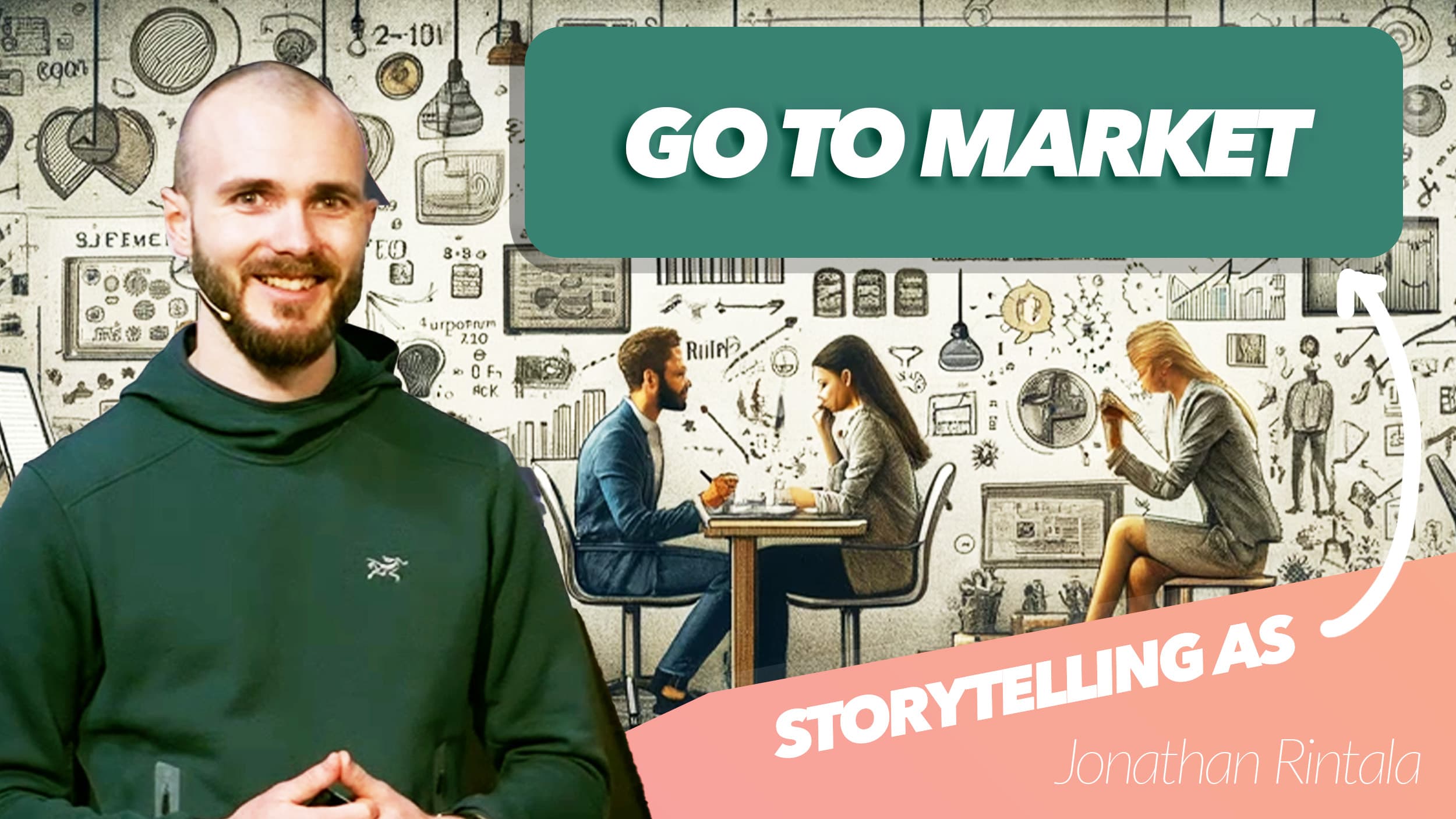
As a startup founder you have one secret weapon though. One that is way underused. And the best thing is - every founder already has one. But few know how to use it.
The founding story.
Grow and market your startup by packaging your founding story right.
Here is how to build your founding story (and use it to win):
Storytelling - The trojan horse to win
Market like the pros and start to tell stories. This will help prospects connect with you, the problem you are solving, and the why behind it all.
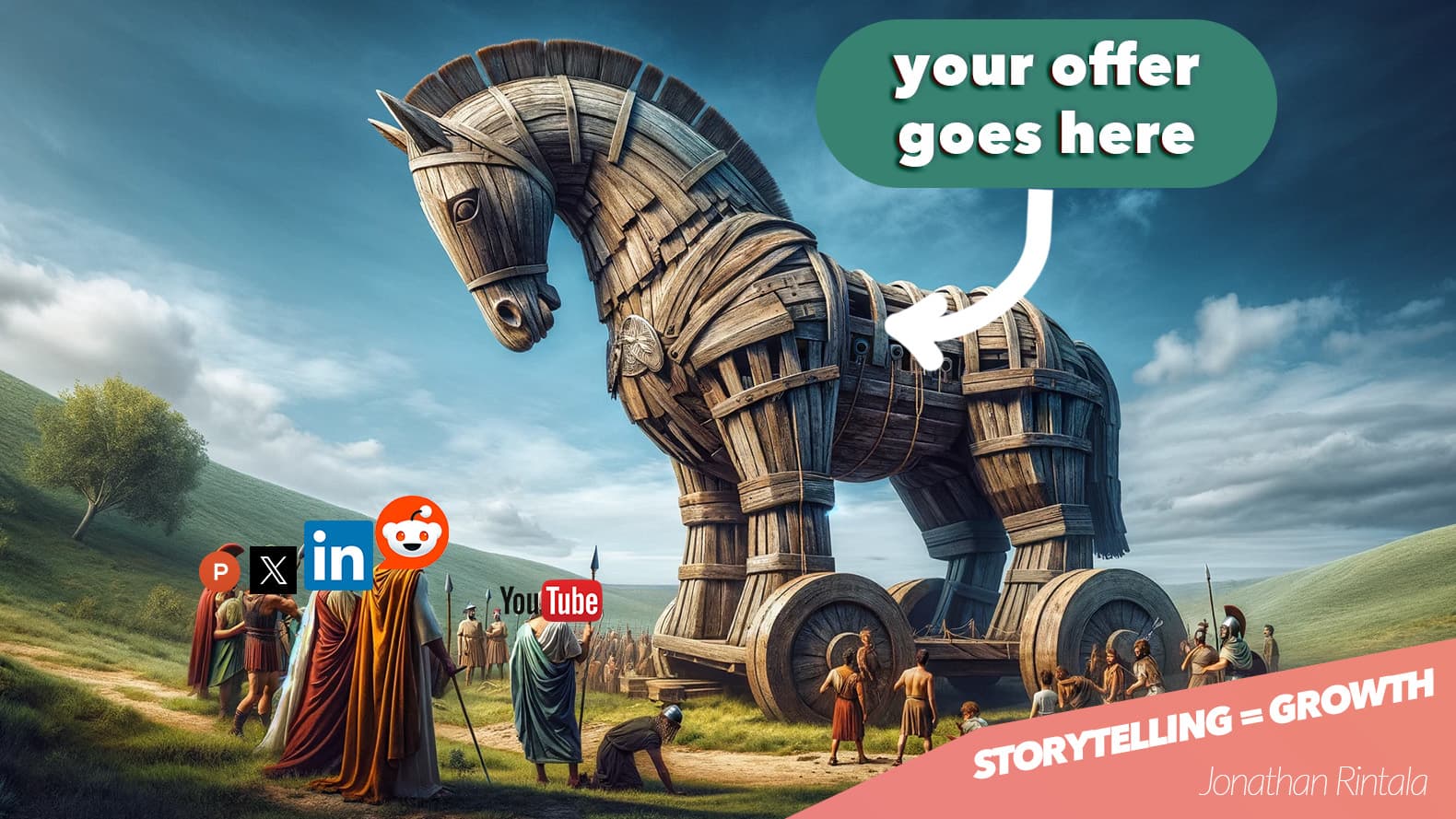
You will not just be any other commodity. But rather a noble startup fighting against the big guys. And for a greater cause. That is something people relate to, want to help support, and buy from.
Why storytelling matters to startup founders
A founder's job is all about selling - both within the company and to the outside world. Telling stories will help you sell more. Thus, it should be the number one priority as a founder (yes, besides talking to customers and building).
Storytelling will help you get results - whether it's selling:
Pitch to VCs
Monthly update to board and existing investors
Product offering to new customers
Product vision to existing users
Big picture and strategy to employees

How to build your own founder story (4 steps)
Building your founding story is probably something you have already most of the pieces to. You just need a structured way of mapping it out and putting it all together. Here are the 4 steps to do it:
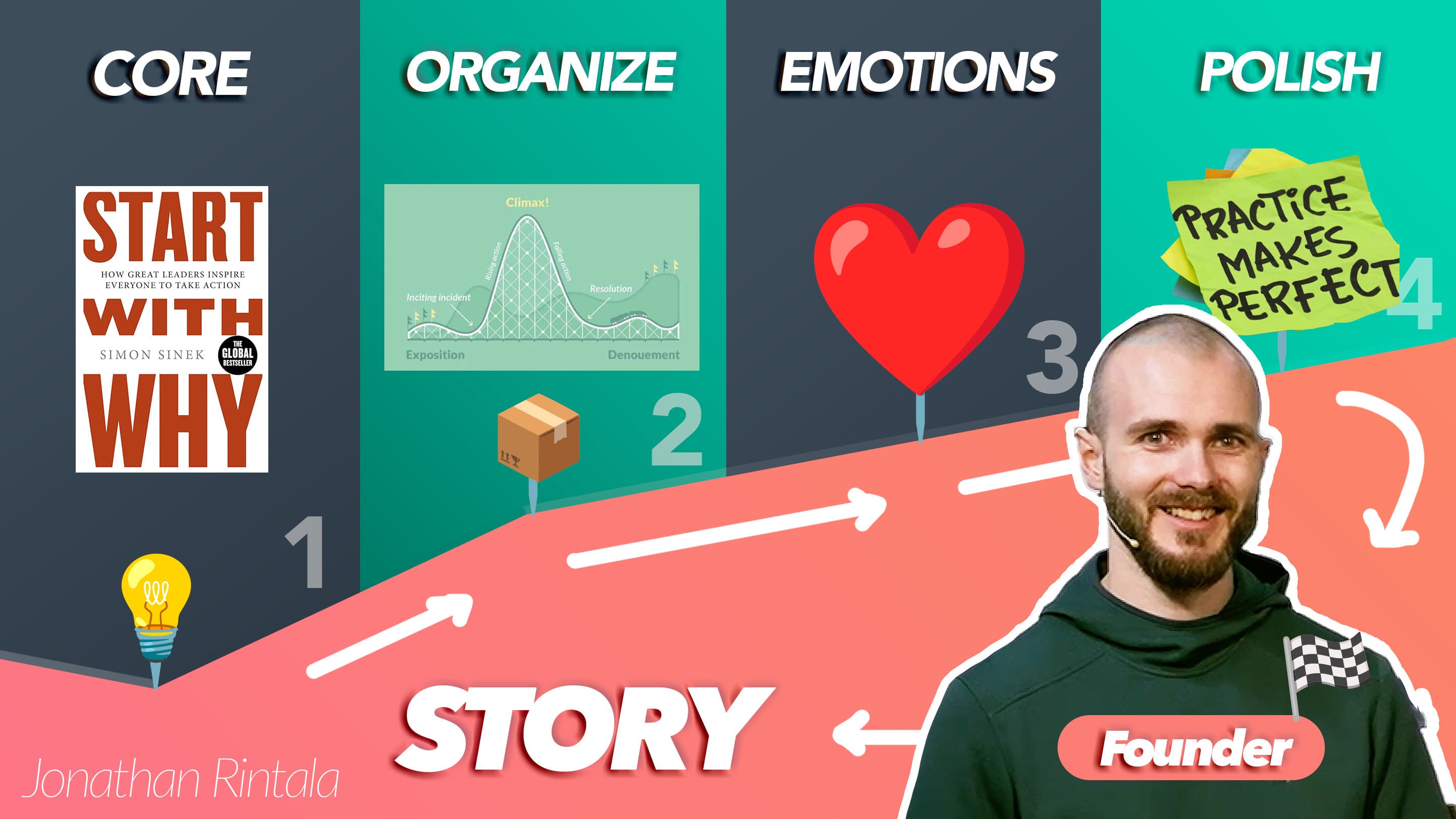
Step 1: Set the core building blocks
Start with WHY - reflecting on your early experiences, values, and life events that shaped your decision to get into entrepreneurship. And the WHY to starting your startup.
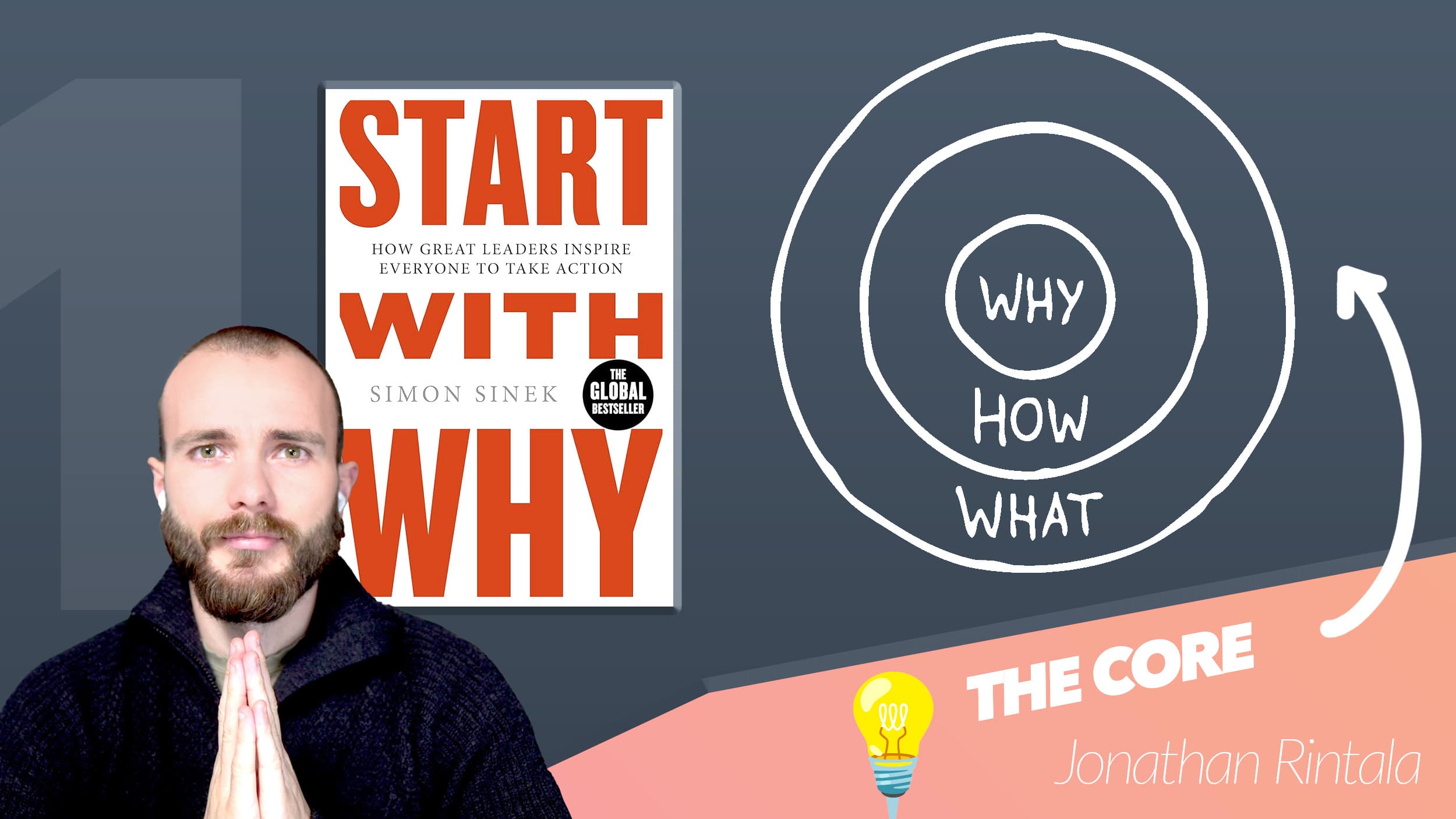
Psst. if you haven't read Simon Sinek's book - do it. Define your why - and the "how" and "what" will naturally follow in your story.
Three core building blocks to include:
Why you got started: Identify the key moment or idea that led to building your startup. What problem did you see? Who had this pain? What solution did you find?
Challenges you overcome: Document the major obstacles you encountered along the way and how you addressed them. People know not everything is a straight road, but love taking the first spectator seat in the entrepreneurial rollercoaster. So, share your struggles transparently. This shows resilience, authenticity, and determination. A plus if you can do this whilst you are in the midst of these challenges - #buildinpublic founders like Adam Robinson gained 78K followers on LinkedIn from these types of transparent posts.
Future vision: Articulate where you see your company going. What are your BIG goals? How do you plan to impact your industry? How will you put a dent in the universe?
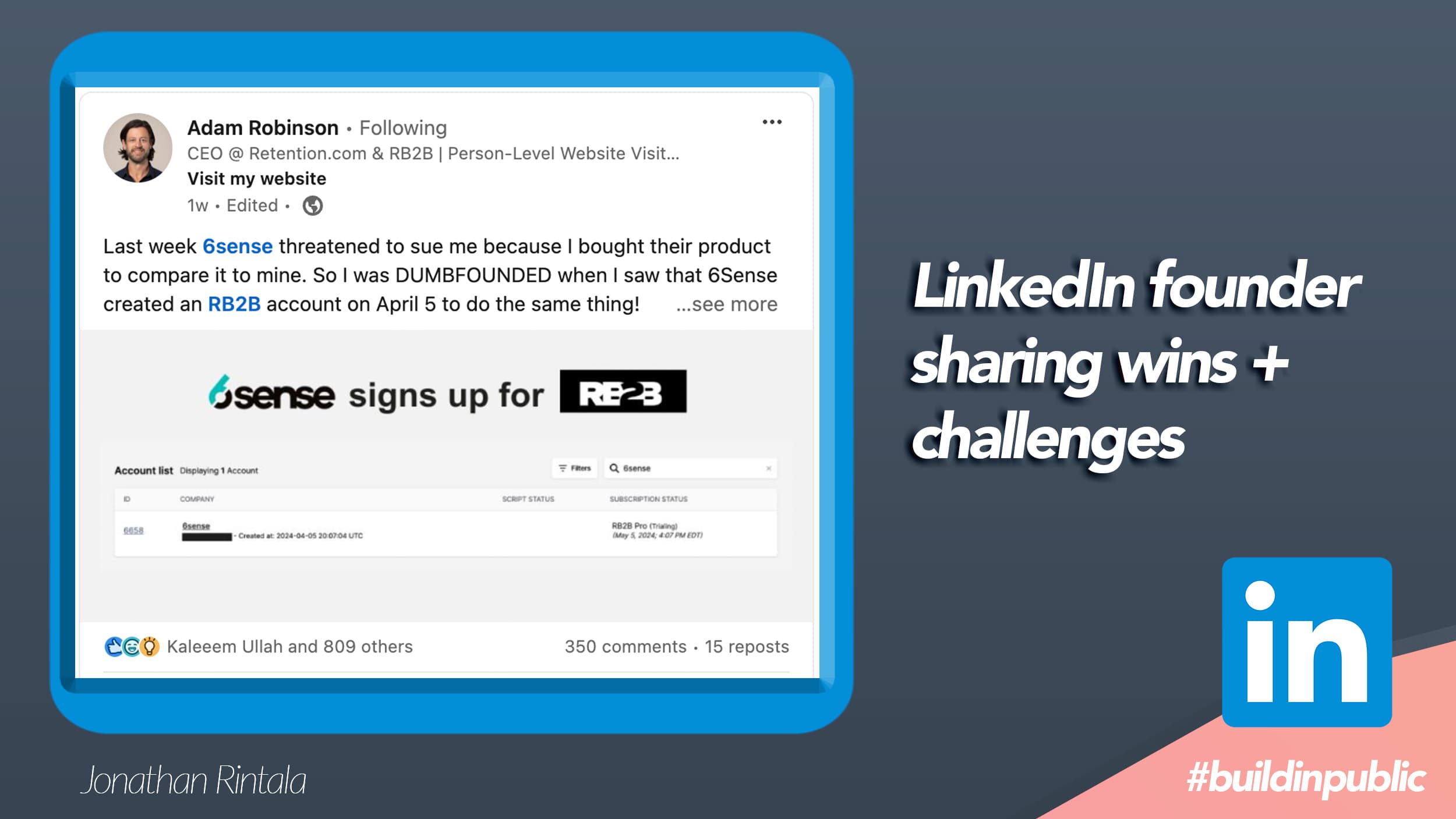
Step 2: Organize your story
Arrange the elements of your story in a Narrative Arc. And you will make sure to tell your story in a way people will listen.
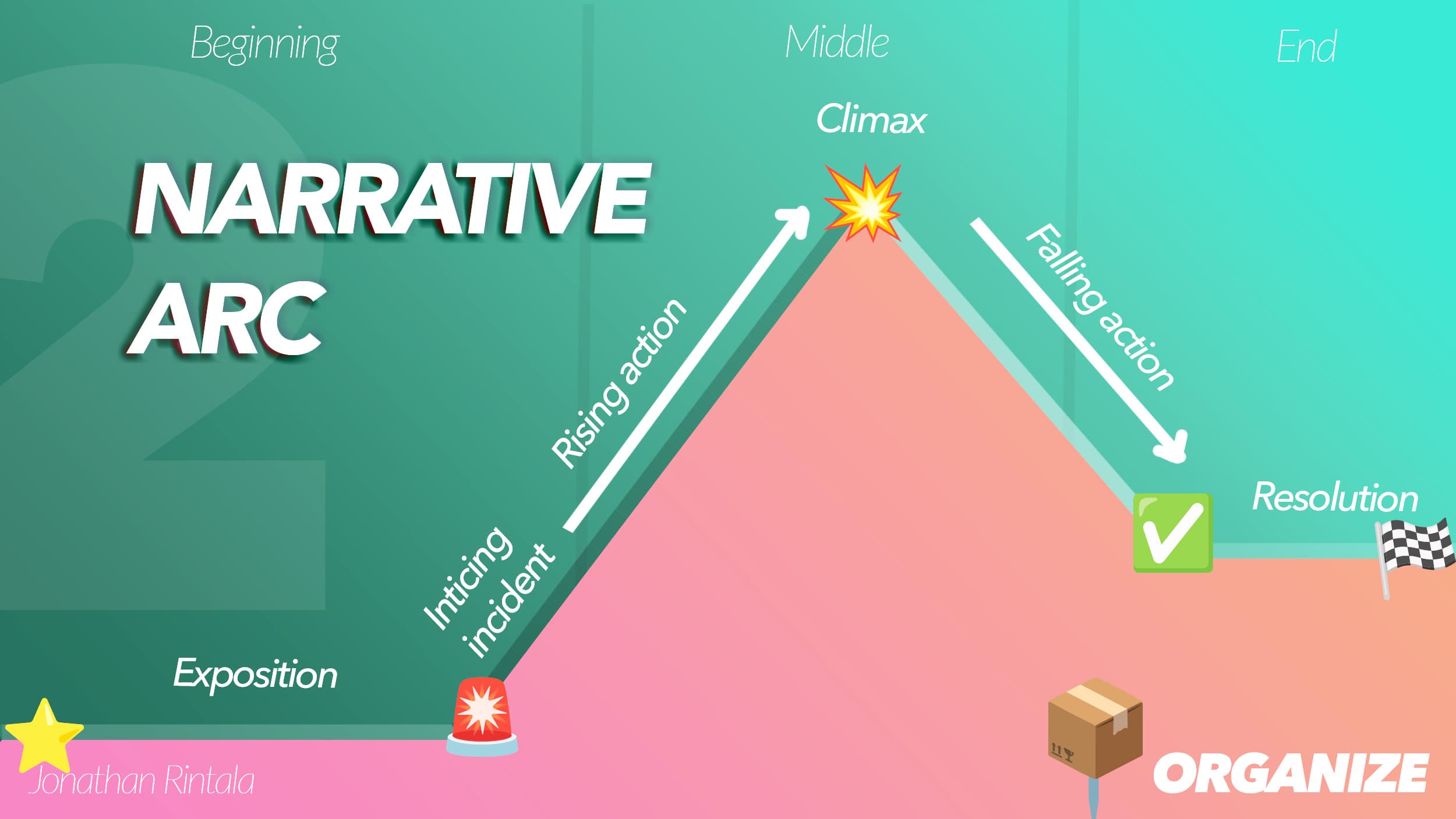
The Narrative Arc makes sure the story flows logically from one section to the next.
This maintains coherence and keeps engagement high. It involves the following sections:
Exposition: Introduce yourself and give some background. What led you to where you are today? Paint the broad picture.
Conflict: Describe the challenges you faced along the journey. Preferably, one event that triggered the rising action and put the story (startup) in motion.
Climax: The pivotal moment. Overcoming the most significant challenge or obstacle on the journey.
Resolution: Explain how you overcame the challenges. Revealing the strategies / solutions used. Also, here is where you showcase the positive outcomes.
Conclusion: Share the grand vision for the future. What do you hope to achieve?
Step 3: Enhance emotions
Trigger emotions and people will listen. Emotions also make people remember.

Keep emotional elements: Use emotional storytelling techniques to connect with your audience. This could include sharing personal fails, wins, and aha-moments.
It's often difficult to include emotions and feel like something you should leave outside LinkedIn, etc. Instead, try leaning into emotions. This way you can make people stop scrolling, start engaging, and remember you.
Tell it like it is (no filter): Did you really just feel "abit happy" when you closed that big client - or did you feel like you "wanted to call your mom on the spot, scream from the rooftops, or tell all your friends at the AW about it". People love strong emotions and relate to them. Don't hide behind small adverbs.
Maintain authenticity: Be genuine and honest in your storytelling. Authenticity builds trust and makes your story more relatable.
Tailor your story to your ICP: Consider the interests, challenges, and dreams of your audience. Make your story resonate with them and address their specific needs, language, or interests.
For example, you can reach a certain type of niche audience by making references to influencers in that space, or using abbreviations only they know. Eg. for CMOs it could be using language like "GTM", "attribution", or "copy".
Step 4: Polish narrative
It's time to put our story to the test - and make some final adjustments..
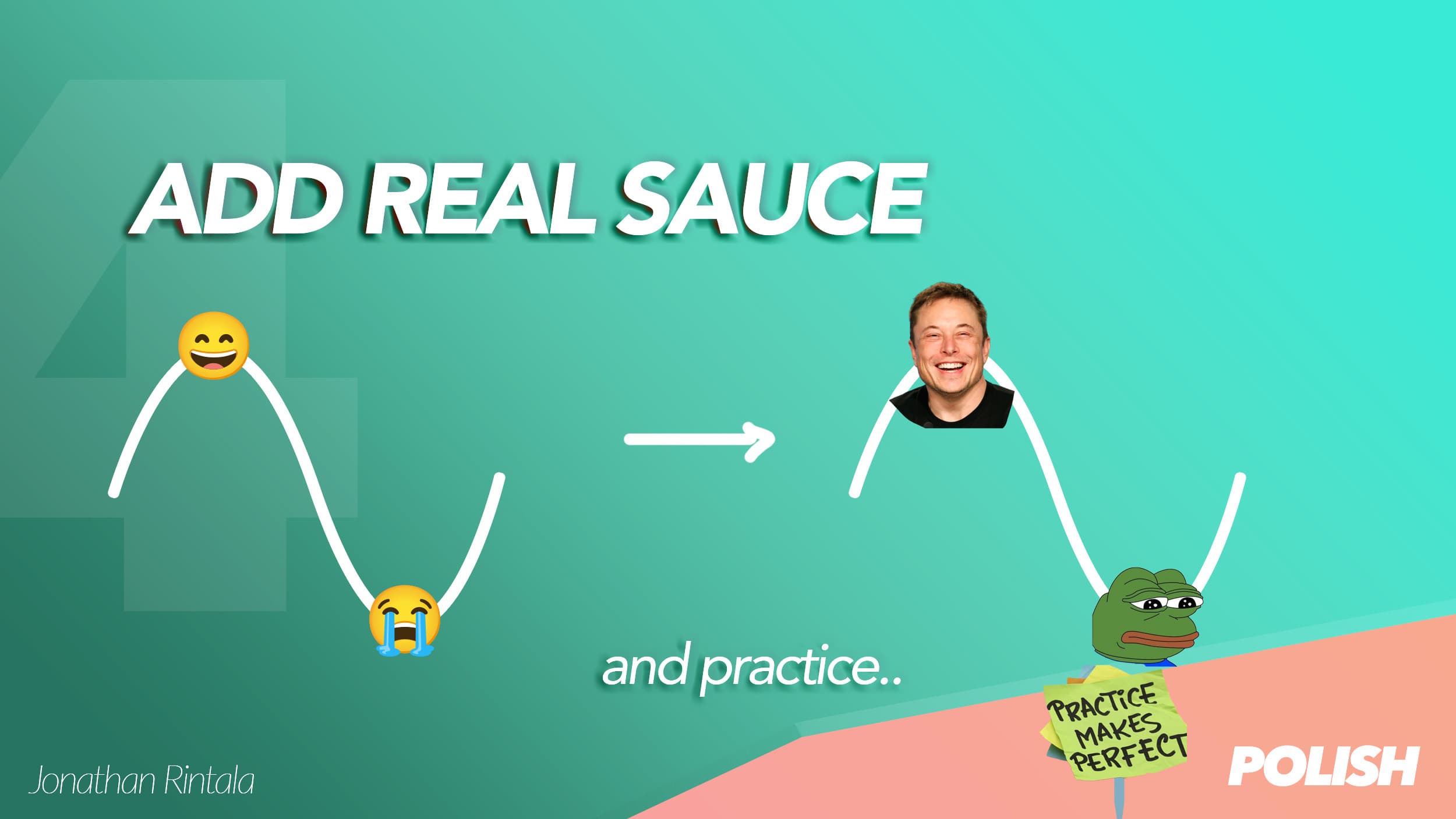
Use raw proof from real people: Bring your story to life with descriptive language and direct quotes from yourself or relevant stakeholders. This adds personality and depth to your narrative. Customers, partners, or external parts are great candidates to use - these all give trustworthiness to your story.
Practice delivery and pacing: Whether written or spoken - practice how you deliver your founder story. This will help you refine its pacing, tone, and emotional impact.
Record yourself pitching the story: Record, play it back, run it in different formats - in front of the mirror, in front of the webcam, standing by a desk, sitting in the coach with your partner.
Get feedback: Share your story with trusted advisors, mentors, or peers. Use their feedback to make adjustments and improve the story’s clarity and impact. Ideally, you will now start pushing the story towards prospects, see their response, and fine-tune it.
Turn your founder story into growth
You now have your story set - you have practiced it and know that it works. Let's put it to use to grow your startup.
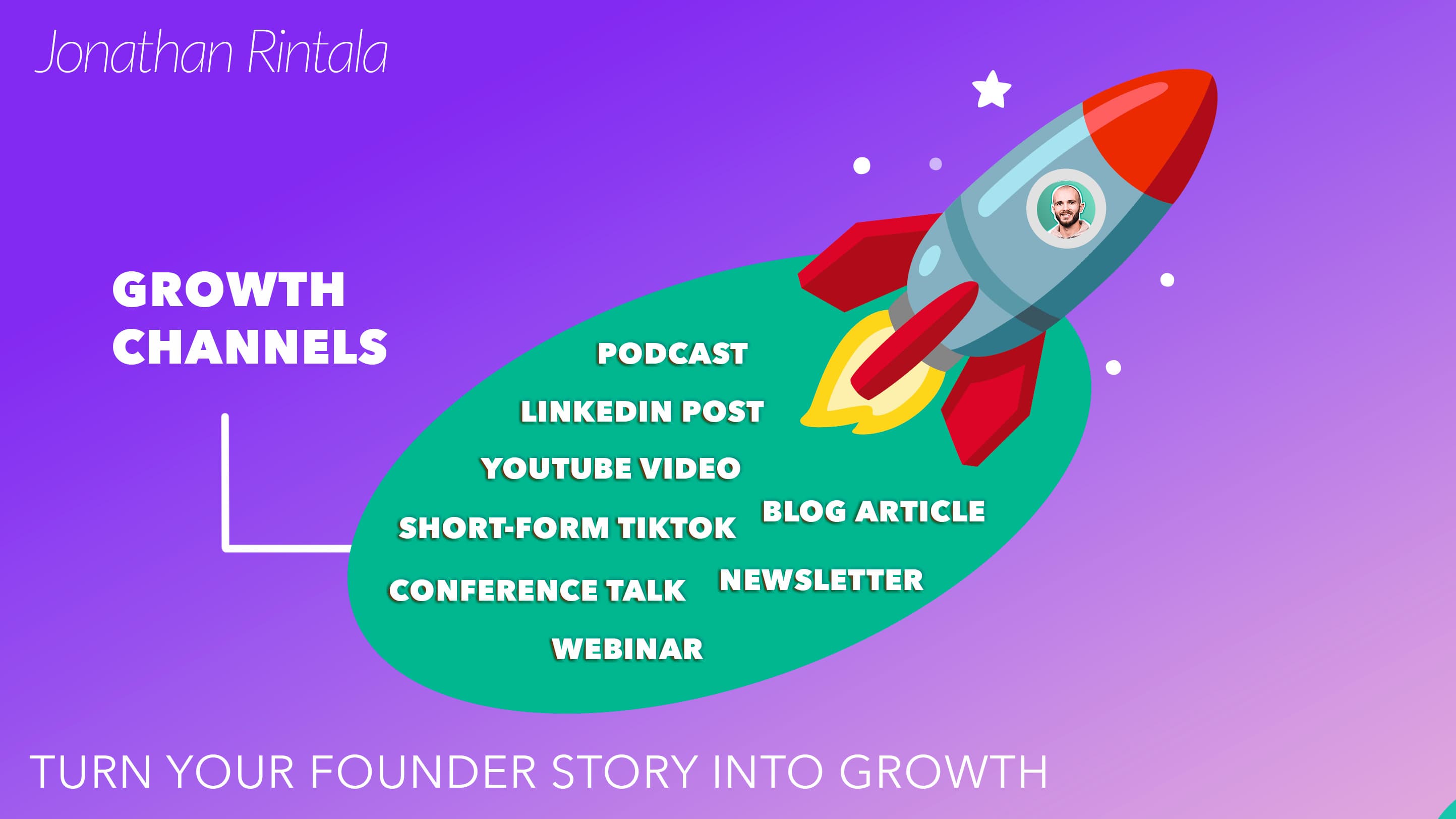
By sharing the founder story in different formats you can reach different types of people. This way you can also reach the same people from different angles.
Your ICP (ideal customer) will decide what growth channels and formats to focus on sharing your story in. But, also your personal preference, or existing large followings can play into what channels that are most efficient. Here are some growth channel examples:
Podcast
Thought leadership webinar
LinkedIn post - use my free LinkedIn post preview tool
Blog article
Public speaking at conference
Newsletter
Youtube video
TikTok and short-form video
Build your founder story playbook
Incorporate into marketing materials: Use your founder story in various marketing materials like your website, social media profiles, and investor pitches to strengthen your brand identity.
Incorporate into the sales playbook: The founder story needs to be part of the sales playbook. Otherwise, it never reaches the prospects once you scale. It can be rewritten to fit the perspective of each role.
Regularly update your story: As your startup evolves, so should your story. Update it to reflect new challenges, milestones, pivots and learnings. Also, your vision likely updates along the way. Then revisit your story.
Next level - hand it over: If things go as planned - you will soon start handing over your story to your employees. If you are in sales or running demos for your startup - you should practice it together with your SDR:s - who will run it for you.
Note: when handing your story over, you will make some adjustments to your story to make it feel natural to the storyteller.
Record meetings: Also, make sure you record all sales meeting with an AI notetaker - this way you can look back at the story and update it together with your team.
What tools do you need to launch content as a founder?
Building content as a startup founder is quite straight forward, and generally don't require any expensive tools or gear.
Of course, it depends on what type of content you want to run, where some might require more specific skills like video editing, or tools, and others are more straight forward. For example:
Youtube video
If you want to run video content - you might want to invest in a ring light, a quality web camera, etc.
You should also know how to edit videos, or have the funds to outsource it to an editor.
LinkedIn post
For LinkedIn, you generally don't need any tools. However, it can be good to preview your posts before, to refine hook, etc. - I do it so much I even put together my own LinkedIn Post Preview tool. And you can use it here for free.
Some founders with $$ hire a ghost writer to help them out - either as a creative director to help them set the tone, or directly write their posts. But most founders write their own content.
There are also tools to build communities or circles that engage with each others' content. But organic LinkedIn is imo the way to start!
Conclusion
Tell stories as a founder and see your company scale like never before - despite bloody red markets. People will not just listen and remember you - but also re-share the vision (and indirectly your product). These people can be prospects, investors, employees, and family. Follow the 4 step process and you will become a master at storytelling - build a founder story that hits home, follows the Narrative Arc, sparks emotions, and is proven to work.
Want to learn more about growing SaaS companies?

